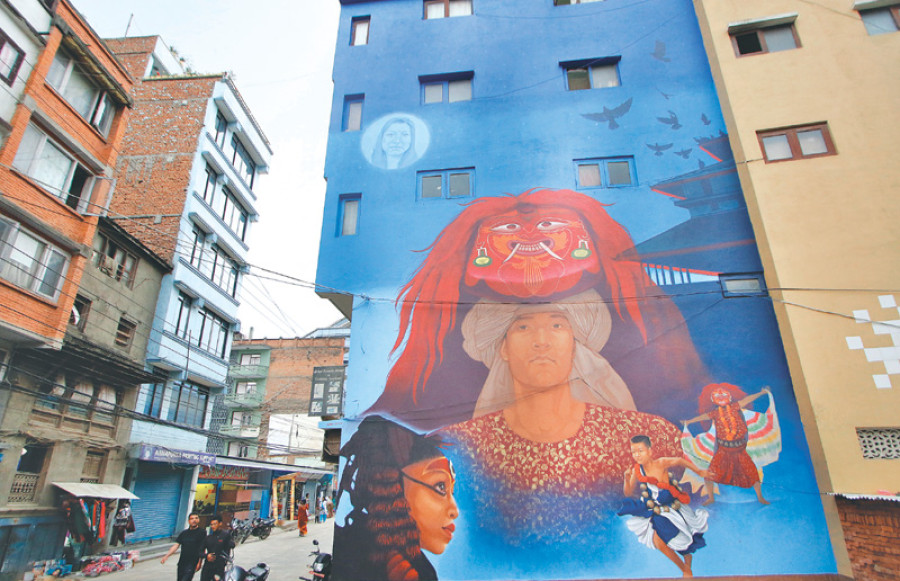Entertainment
The man behind the Lakhey
The Majipa Lakhey occupies a prominent space in Kathmandu’s imagination. Not only is his dance—enacted through the old city’s maze-like streets every Yenya (Indra Jatra)—a much-awaited cultural event in the Capital,
Sanjit Bhakta Pradhananga
The Majipa Lakhey occupies a prominent space in Kathmandu’s imagination. Not only is his dance—enacted through the old city’s maze-like streets every Yenya (Indra Jatra)—a much-awaited cultural event in the Capital, but the stark red mask and positively terrifying demeanour has made the Lakhey one of the most photographed and published cultural images of the Valley. Yet, often, it is easy to forget that a real person is under the terrifying mask.
That person is Laxman Ranjit and he has his own story to tell. Ranjit was donating blood with his wife Nilu at Kasthamandap when the April 25 earthquake struck. When the tremors started, instinctively, he rushed out of the complex to shield his son, Aryan, who was playing outside.
Nilu, however, didn’t make it.
Now, Ranjit’s story has been brought alive by artist Martin Travers on a five-storey high mural in Ombahal. The mural was officially inaugurated as part of the ongoing Kathmandu Triennale 2017 on Friday.
Speaking of the inception of the mural, artist Travers said, “When I first met Laxman, I was incredibly moved by his story. He has been the [Majipa] Lakhey so many years and I thought that the overlap between his story and the mythology behind the Lakhey was very poignant.”
The Majipa Lakhey, in Newar mythology, is the protective deity of all children in the Valley.
“I wanted to paint the mural in Ombahal, as it is where Laxman is from,” said Travers, “And I have been lucky to have him at the site while we were creating the mural. He was our ‘local contact’. Because I was painting images with religious significance, it was important for me that it was a consultative process, so that I didn’t overstep, being an outsider.”
The mural itself, the second Travers has painted in Kathmandu, occupies the façade of a five-story building. Laxman Ranjit’s unmasked portrait forms the centrepiece of the artwork, while images of the Kumari, the masked Lakhey, the Jhyalincha and the Kasthamandap surround it. In a touching tribute, Nilu Ranjit’s portrait, painted inside a moon, hangs solemnly above.
“This was a strong personal story, but one that has deep roots in the society,” said Travers, speaking about the placement of the mural in Ombahal. “As an artist, it is important to me that the art resonates with the community that it is about.
After all it is them who will be walking past it day in, day out. My aim was to tell Laxman and the Lakhey’s story, not mine.”
And judging by the local community gathered at the mural at its opening on Friday evening, Travers accomplished what he set out to do.




 15.12°C Kathmandu
15.12°C Kathmandu










